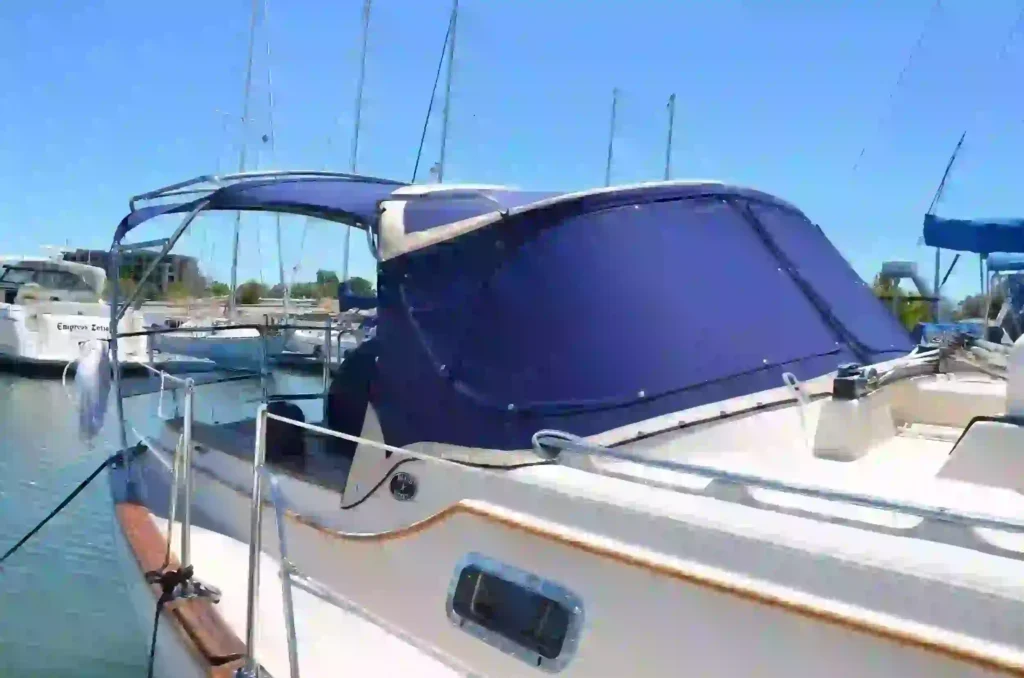Sailboats are incredible machines designed for adventure and efficiency. A well-maintained sailboat requires a set of key components for optimum performance and comfort. Among these are the sailboat traveler, dodger, and bimini—each serving unique and essential purposes. This article will provide an in-depth guide on the sailboat traveler with a dodger and bimini, explaining their roles, installation process, maintenance, and the advantages of having all three on your sailboat.
Introduction to Sailboat Traveler Systems
A sailboat traveler is a critical part of your boat’s rigging, responsible for adjusting the angle of the mainsheet and influencing sail performance. his mechanism allows sailors to fine-tune their sails for better control, especially in varying wind conditions.
Travelers come in various styles and sizes, and understanding how they work is vital for both novice and experienced sailors. A proper traveler system can significantly improve the ease of maneuvering and the boat’s overall performance. With the right adjustments, a traveler can help in maximizing sail efficiency and reducing unnecessary wear on the rigging.

Understanding the Dodger
A dodger is a canvas or vinyl structure mounted near the cockpit, designed to protect the crew from wind, spray, and sun. It acts as a shield, enhancing comfort during long sails in harsh conditions.
Dodgers are often made of durable, waterproof materials like Sunbrella fabric, designed to withstand the marine environment. Besides protecting the crew, they also provide additional storage for smaller items, creating a more organized and efficient workspace.
Key benefits of a dodger include:
- Enhanced protection from wind and spray
- Added storage space for essential gear
- Improved aesthetic appeal for the boat
Understanding the Bimini
A bimini, unlike a dodger, is primarily meant for sun protection. It is a canvas cover supported by a metal frame, typically installed over the cockpit or helm area. A bimini allows sailors to enjoy shade on sunny days, significantly improving comfort during extended sailing trips.
Biminis are constructed from lightweight yet durable materials like stainless steel and aluminum for frames and UV-resistant canvas for the cover. The simplicity of design allows them to be easily folded away when not in use.
Advantages of a bimini:
- Provides shade and protection from harmful UV rays
- Reduces cockpit heat, making sailing more comfortable
- Easily removable and storab

Compatibility between Traveler, Dodger, and Bimini
Integrating a sailboat traveler system with a dodger and bimini requires careful planning to ensure that each component functions correctly without hindrance. Travelers are typically installed in the cockpit area, so the placement of a dodger and bimini must allow space for the traveler to move freely.
Before installing these components, it’s crucial to measure the available space and ensure that the traveler system does not interfere with the frame or positioning of the dodger or bimini. Modern designs allow for custom-fit solutions that enable all three to coexist without compromising on functionality or safety.
Choosing the Right Traveler for Your Sailboat
When selecting a traveler system, consider the size and type of your sailboat, as well as your sailing habits. Heavier-duty traveler systems are necessary for larger boats, while smaller boats can function well with simpler, lightweight models.
Key factors to consider:
- Boat size and type
- Expected sailing conditions
- Ease of installation and maintenance
- Brand reputation and warranty
Popular traveler brands include Harken, Ronstan, and Garhauer, known for their durability and performance.

Installation Process for a Sailboat Traveler
Installing a traveler system requires precision and the right tools. Most traveler systems come with detailed instructions, but professional installation is recommended for optimal performance. Basic installation steps include:
- Measuring the cockpit or deck area.
- Drilling pilot holes for the traveler track.
- Securing the track with screws and sealant.
- Installing the traveler car and adjusting the tension on the mainsheet.
Challenges may arise during installation, especially on older boats with limited space or uneven surfaces. Ensuring that the traveler is properly aligned is key to smooth operation.
Installation of a Dodger
Installing a dodger involves fitting the frame and attaching the canvas, ensuring a snug fit that offers maximum protection. Key steps include:
- Assembling the frame.
- Installing attachment points on the deck.
- Stretching the canvas or vinyl over the frame.
- Securing the dodger to the boat.
Conclusion
A sailboat traveler system, along with a dodger and bimini, significantly enhances your sailing experience by offering better control, comfort, and protection. Proper installation and maintenance are essential to ensuring these systems function optimally. Whether you’re a weekend sailor or an experienced cruiser, investing in these components will make your time on the water safer and more enjoyable.
FAQs
- What is the best material for a dodger?
The best material is typically UV-resistant fabrics like Sunbrella, known for its durability in marine environments. - Can I install a traveler system on my own?
While possible, it’s recommended to hire a professional to ensure correct installation and alignment. - How long does a bimini last?
A well-maintained bimini can last 5-10 years, depending on usage and exposure to the elements. - What are the maintenance costs for these systems?
Maintenance costs vary, but routine care and minor repairs generally range from $100 to $500 annually. - How do I know if my traveler is compatible with a dodger?
Check for proper clearance and ensure the traveler’s movement isn’t obstructed by the dodger’s frame or canvas. - Is a bimini necessary for all sailboats?
While not essential, a bimini is highly recommended for boats that frequently sail in sunny or tropical regions.
